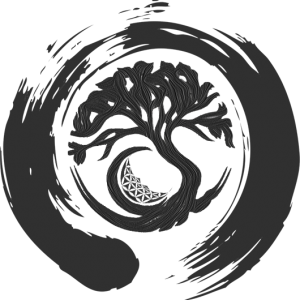We all know that Mahatma Gandhi was a man who practiced and preached non-violence. He is famously quoted for saying:
“You must become the change you want to see in the world”
For Gandhi, this was more than just a quote. He truly did live non-violence. He was practicing one of the Yamas, known as Ahimsa. Do no harm.
But what is the benefit of practicing ahimsa? Well, if the benefits of doing no harm are not obvious or relevant enough for you, then consider this:
Practicing ahimsa is the most fundamental and important way to build ojas.
As a quick reminder, ojas are that which protect us from disease, give us our vitality, endurance, strength, immunity…think of it as a raincoat, or as a bank that we can dip into when we are sick or hurt as to not deplete our already vulnerable body.
So build ojas by practicing ahimsa. Seems simple enough, but what does “do no harm” even mean?
For that, we look at it in three ways:
– Do no harm to yourself
– Do no harm to others
– Do no harm to nature
I could go in depth about how to deal with all three of those layers in our day to day lives, but there is a story about Gandhi that sums it up perfectly:
Arun Gandhi, the grandson of Mahatma Gandhi, was walking home from school one day. He had a pencil that had been worn down until it was quite small. In his family, they did not waste anything. But he thought nothing of it as he was young, and decided on the walk home that he surely deserved a new, fresh pencil, and that his grandfather would give him one. He threw the small pencil in the bushes and went home.
When he got home, Gandhi started to ask Arun many many questions about the pencil. How much did he use it? How small was it? Where did he throw it? Why did he throw it? Over and over he kept fixating on the pencil. When Arun finally asked why he was asking him all these questions about such a small pencil, Gandhi handed him a flashlight and said
“Because we are going to go look for it!”
Arun learned some valuable lessons that day. When he threw out that pencil, he was forgetting that there were so many people that were involved in the making of that pencil. Who planted the tree? Who chopped the tree? Who shipped the tree? Who made it into a pencil? Who then shipped that pencil? Who sold the pencil? By throwing out this one item, he was impacting so many other people, committing violence against them. And by throwing out the pencil, he was also committing violence against nature, for when we over consume, taking what we don’t need, we commit violence against nature. But perhaps the largest lesson was that by simply harming nature and others in this way, he was committing a crime against his own wisdom. He was succumbing to his own laziness and ego, ultimately harming himself on his path in life.
We live in a society where we don’t think twice about anything. Driving to work, throwing out a plastic spoon, wasting out rotten food because we bought too much, getting upset during rush hour, complaining about or jobs…We are not practicing ahimsa far more than we are practicing it.
Which ultimately means we are not only not building ojas – we are depleting ojas.
For those of us who are more pitta inclined, simply hearing this story may be evidence enough to make changes in our intention and attention. Pittas are great scrutineers, willing to change if new evidence is given. But what’s hard for them is seeing the value in having respect for others, self, and nature. There is a purpose: to build and prevent deterioration of ojas. To progress on our spiritual journey. To find the compassion within.
For those of us who are vata or kapha inclined, it is easy to hear this story and slip into guilt. To be overwhelmed considering all the ways we are hurting EVERYONE AND EVERYTHING AHHH!!! Or to be sad and stagnant, feeling like nothing we do will ever change anything…
But it’s okay. You can make a difference. Great ways to practice ahimsa are to focus on the others/nature portion: volunteer, donate time/money, work with people who have special needs, spend time watching animals or kids, take care of a garden…
Some of us may need to make the ahimsa we practice internal before it manifests externally. Others, making it external will make it manifest internally. Either way, there is a level to which we can practice ahimsa that allows us to truly have deep respect for all of existence. But we have to start somewhere. Otherwise, we practice the opposite of it everyday, consciously or otherwise, and destroy our ojas, our health.
With gratitude,
S

